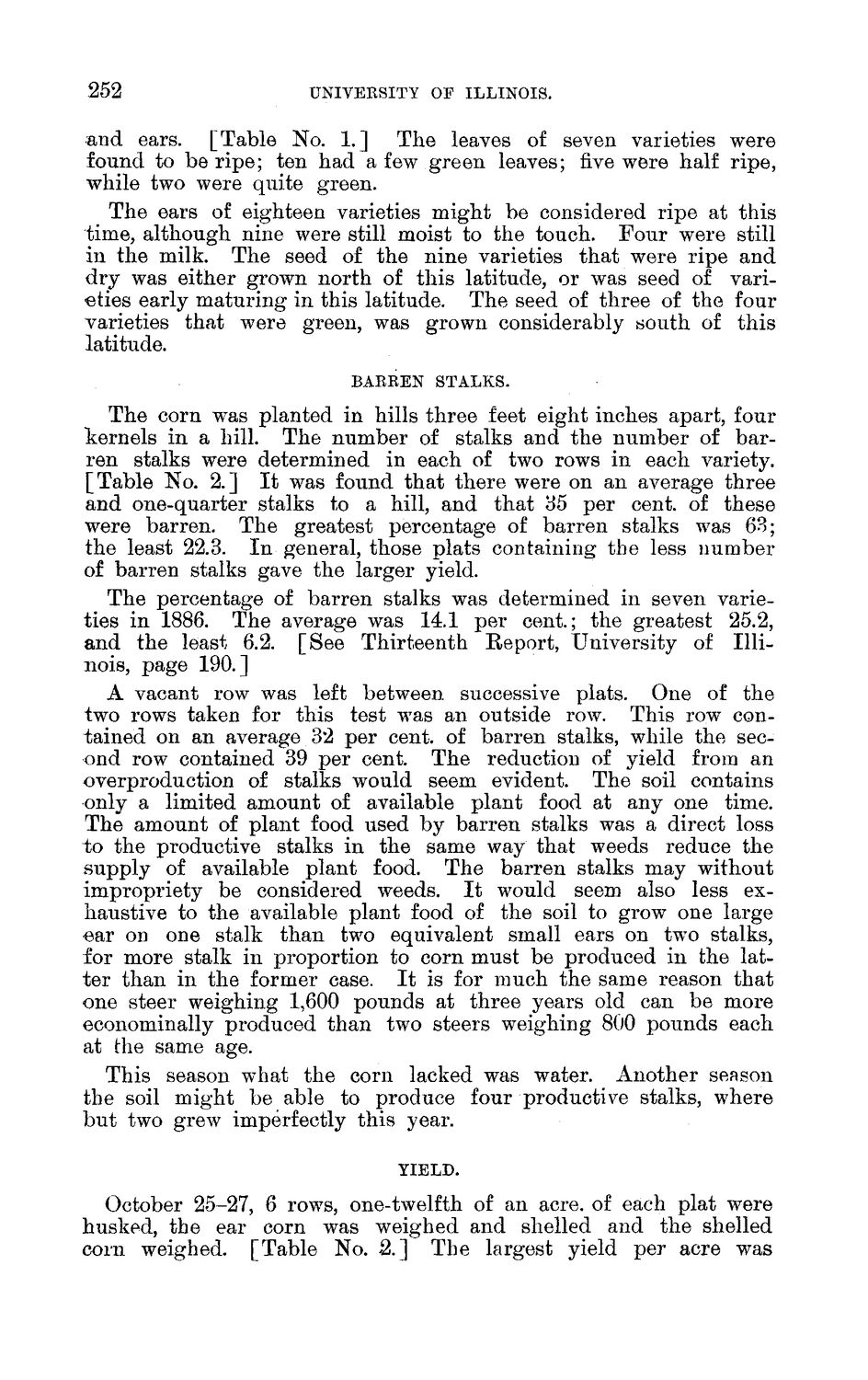| |
| |
Caption: Board of Trustees Minutes - 1888
This is a reduced-resolution page image for fast online browsing.

EXTRACTED TEXT FROM PAGE:
252 UNIVERSITY OF ILLINOIS. and ears. [Table No. 1.] The leaves of seven varieties were found to be ripe; ten had a few green leaves; five were half ripe, while two were quite green. The ears of eighteen varieties might be considered ripe at this time, although nine were still moist to the touch. Four were still in the milk. The seed of the nine varieties that were ripe and dry was either grown north of this latitude, or was seed of varieties early maturing in this latitude. The seed of three of the four varieties that were green, was grown considerably south of this latitude. BARREN STALKS. The corn was planted in hills three feet eight inches apart, four kernels in a hill. The number of stalks and the number of barren stalks were determined in each of two rows in each variety. [Table No. 2.] I t was found that there were on an average three and one-quarter stalks to a hill, and that 35 per cent, of these were barren. The greatest percentage of barren stalks was 63; the least 22.3. I n general, those plats containing the less number of barren stalks gave the larger yield. The percentage of barren stalks was determined in seven varieties in 1886. The average was 14.1 per cent.; the greatest 25.2, and the least 6.2. [See Thirteenth Report, University of Illinois, page 190.] A vacant row was left between successive plats. One of the two rows taken for this test was an outside row. This row contained on an average 32 per cent, of barren stalks, while the second row contained 39 per cent. The reduction of yield from an overproduction of stalks would seem evident. The soil contains only a limited amount of available plant food at any one time. The amount of plant food used by barren stalks was a direct loss to the productive stalks in the same way that weeds reduce the supply of available plant food. The barren stalks may without impropriety be considered weeds. I t would seem also less exhaustive to the available plant food of the soil to grow one large ear on one stalk than two equivalent small ears on two stalks, for more stalk in proportion to corn must be produced in the latter than in the former case. I t is for much the same reason that one steer weighing 1,600 pounds at three years old can be more econominally produced than two steers weighing 800 pounds each at the same age. This season what the corn lacked was water. Another season the soil might be able to produce four productive stalks, where but two grew imperfectly this year. YIELD. October 25-27, 6 rows, one-twelfth of an acre, of each plat were husked, the ear corn was weighed and shelled and the shelled corn weighed. [Table No. 2.] The largest yield per acre was
| |